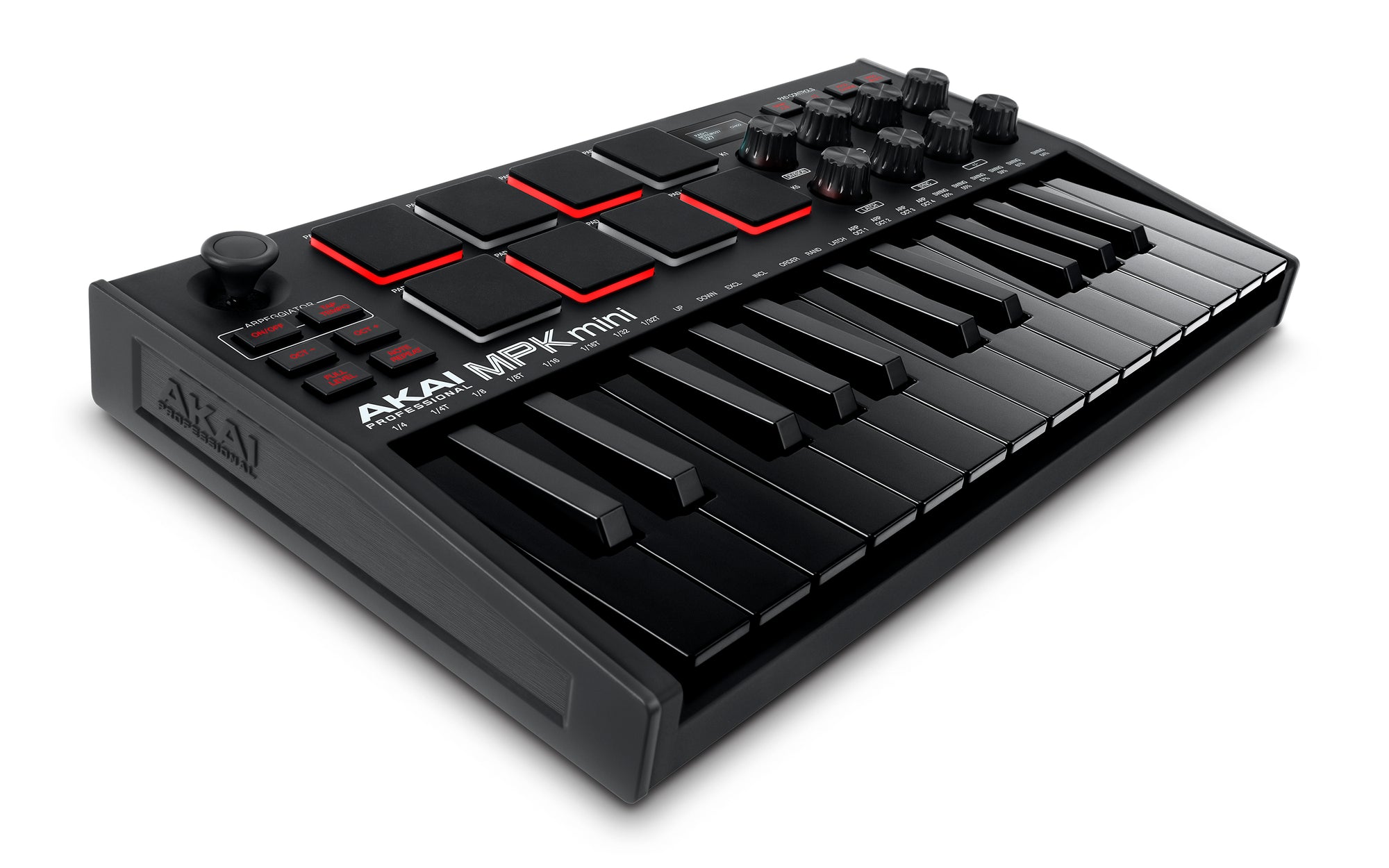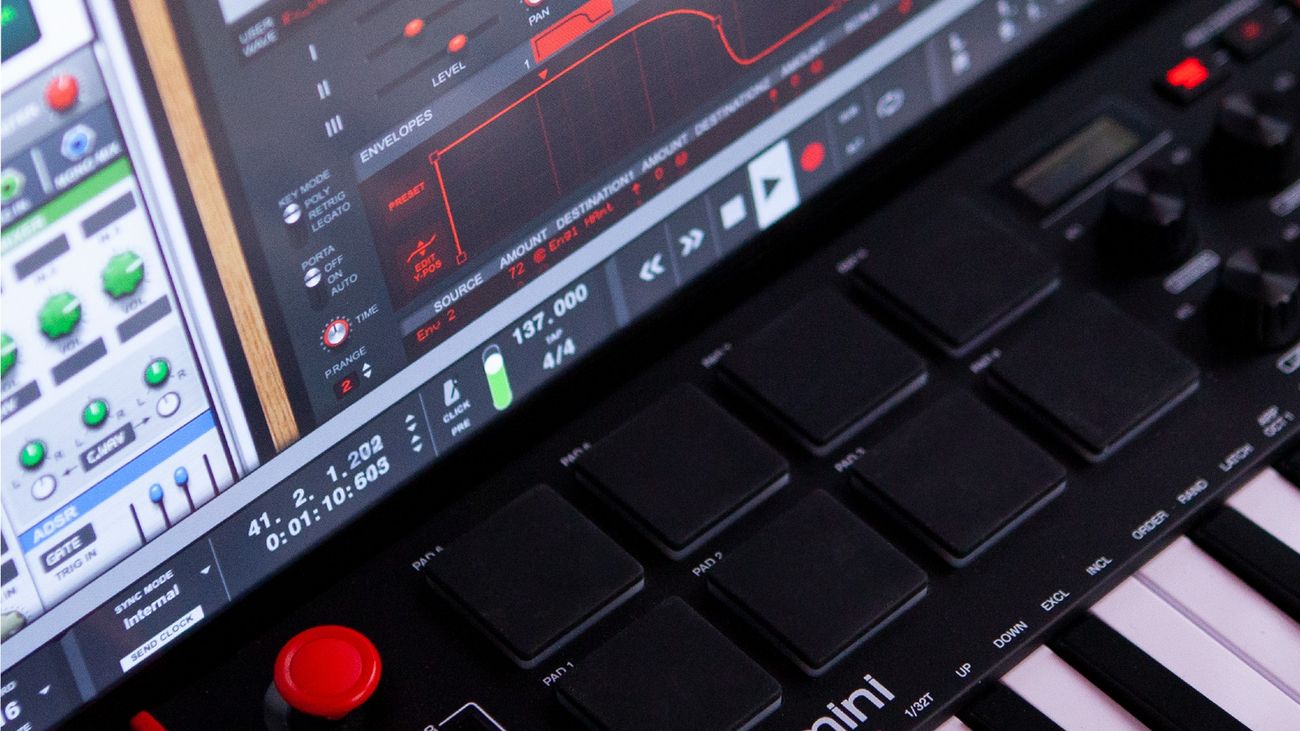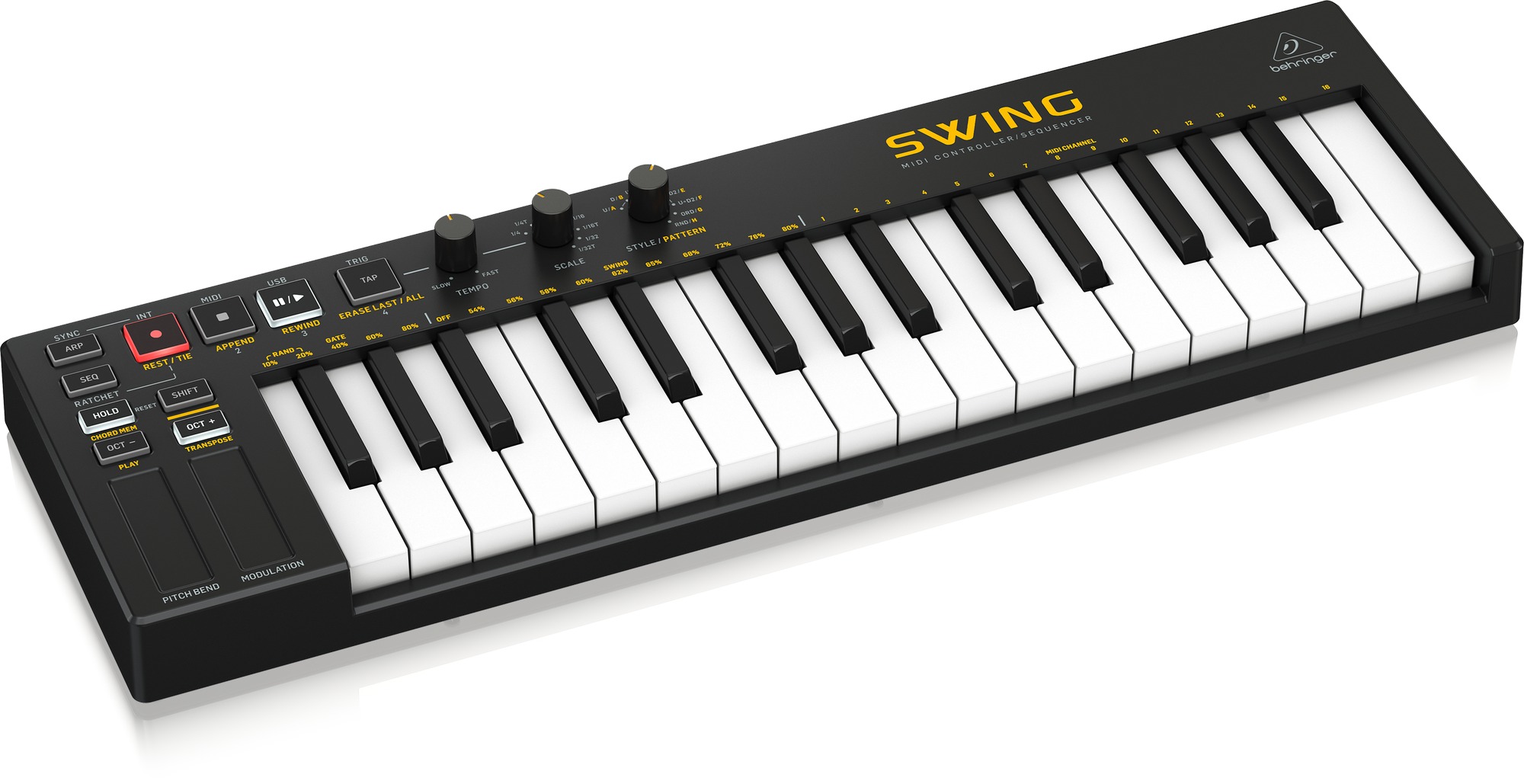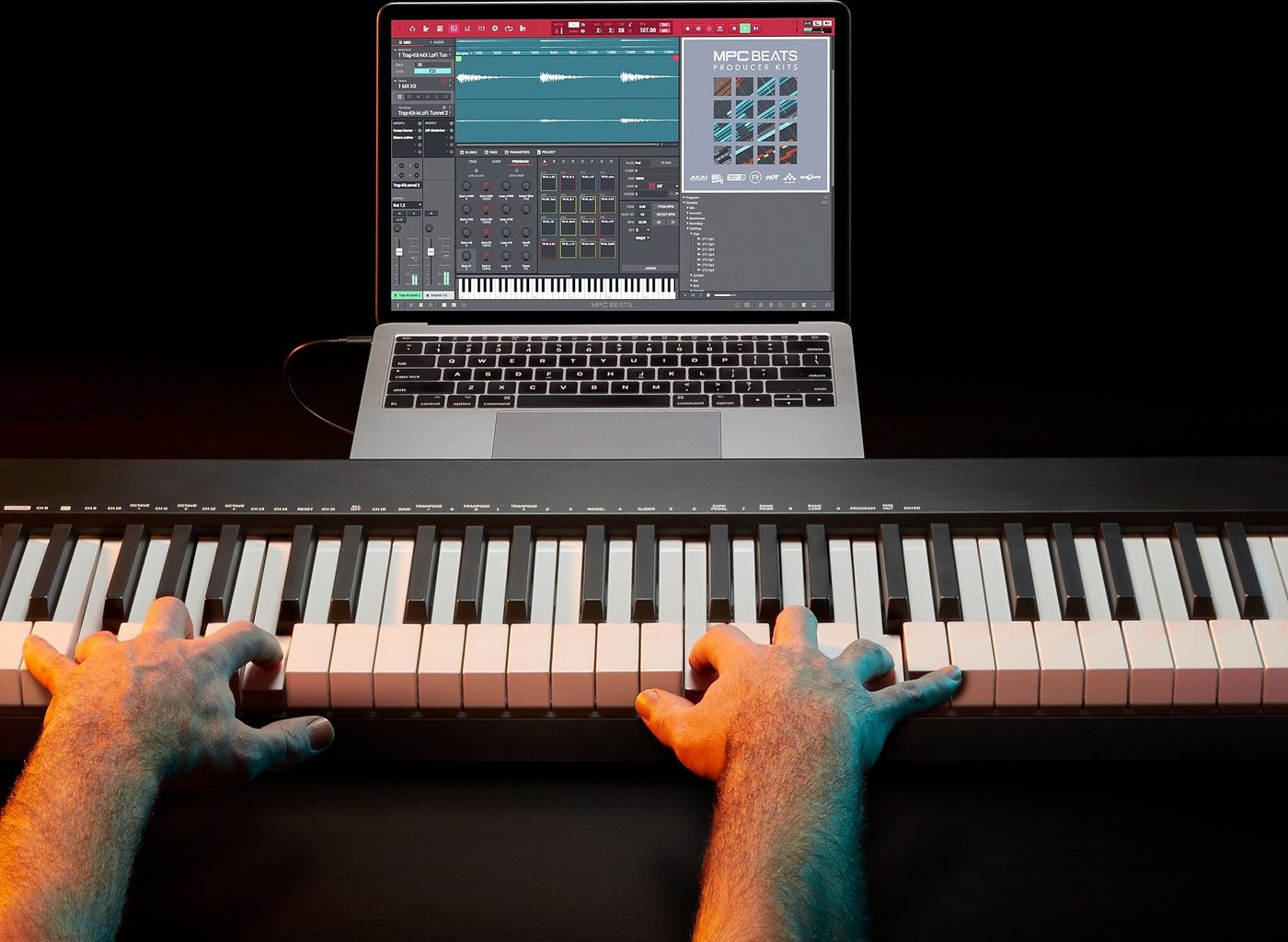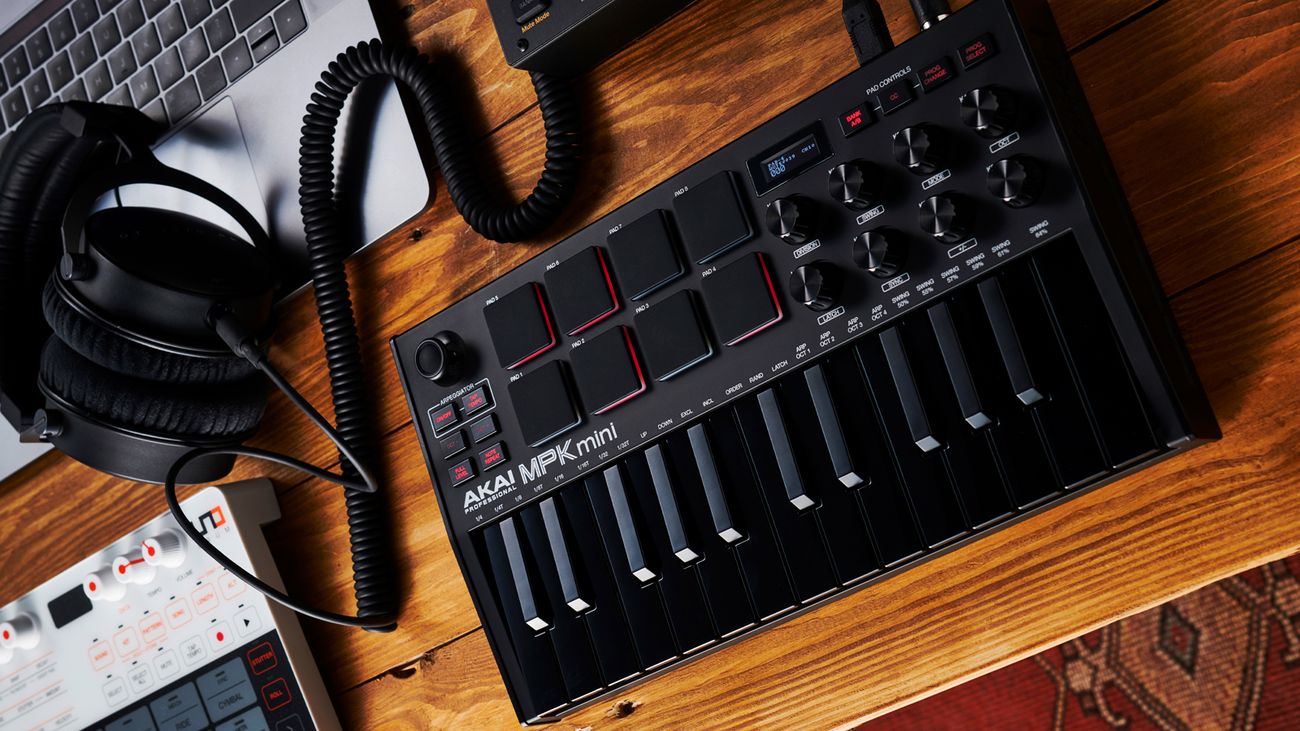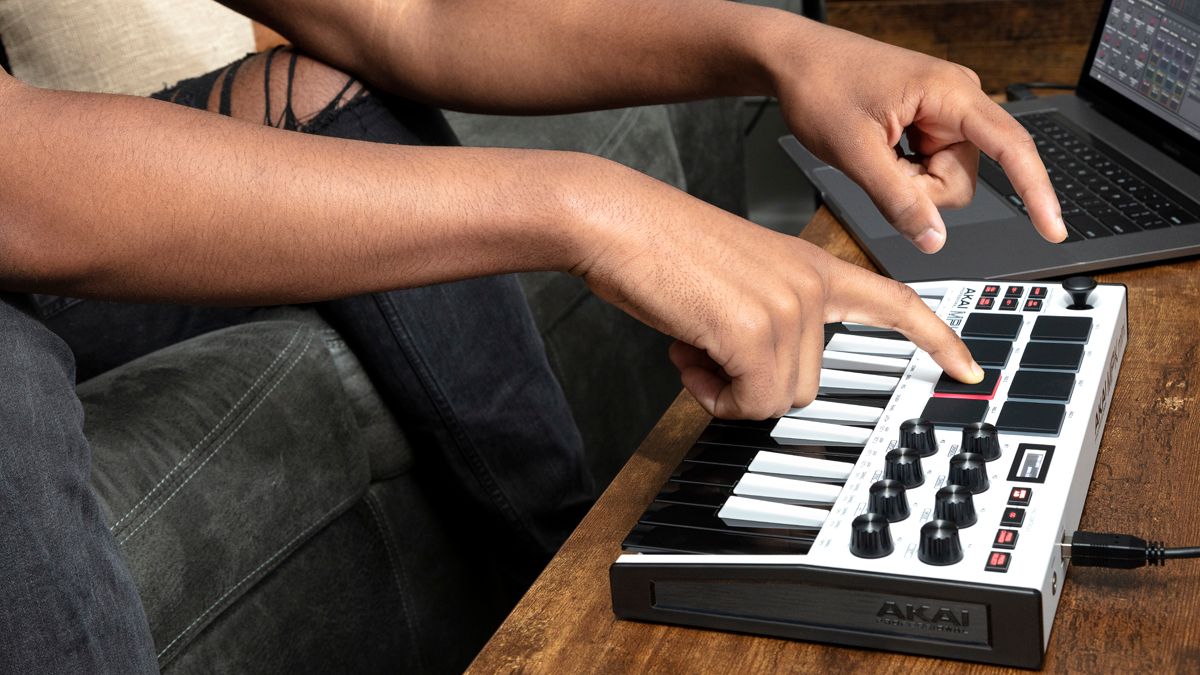Home>Production & Technology>MIDI>What Is A MIDI Keyboard
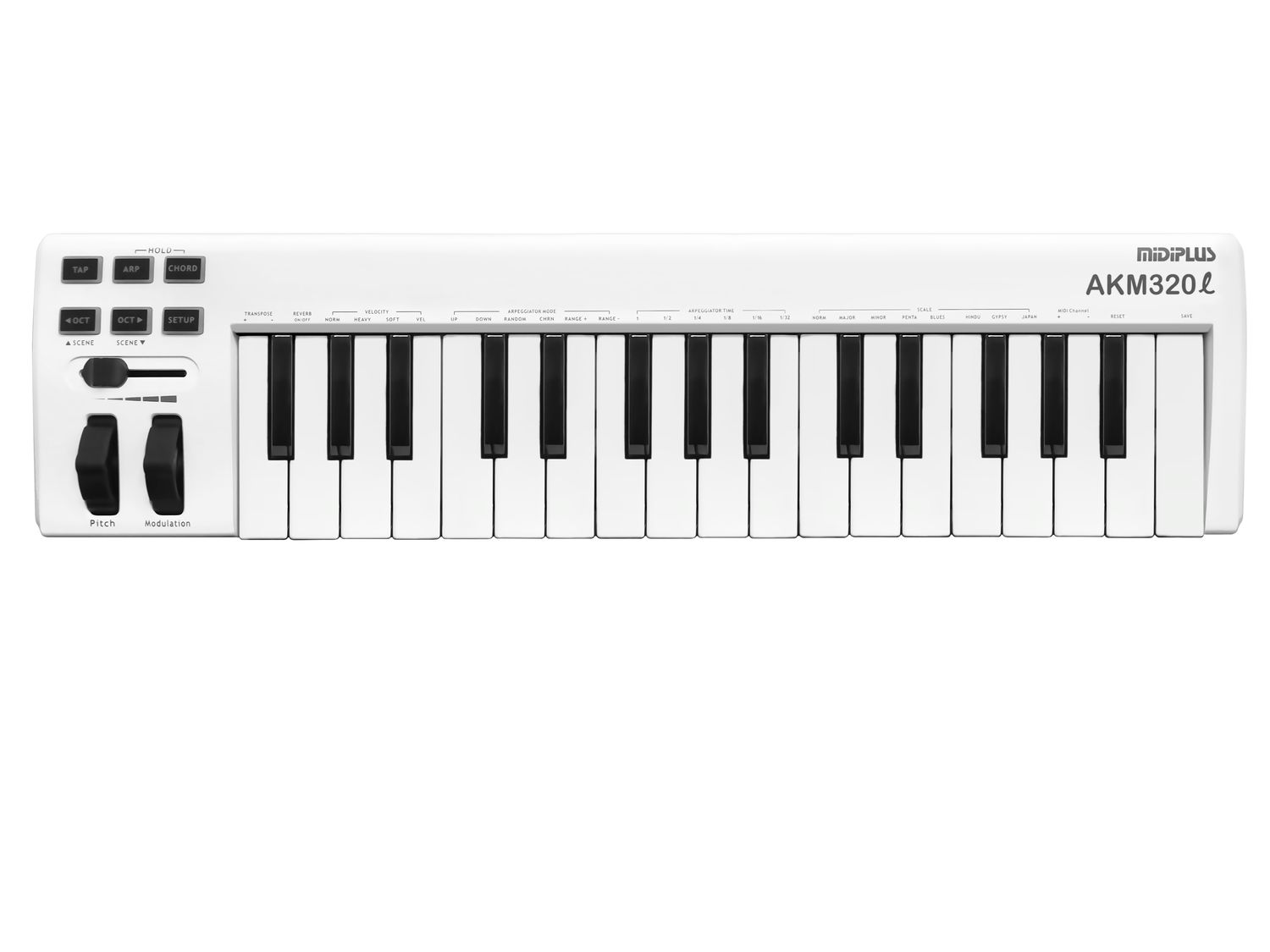

MIDI
What Is A MIDI Keyboard
Published: February 22, 2024
Discover the versatility of MIDI keyboards and how they revolutionize music production. Learn about MIDI technology and its applications in creating music.
(Many of the links in this article redirect to a specific reviewed product. Your purchase of these products through affiliate links helps to generate commission for AudioLover.com, at no extra cost. Learn more)
Table of Contents
Introduction
MIDI keyboards have revolutionized the music industry, offering a versatile and dynamic approach to creating and performing music. With their ability to seamlessly integrate with digital audio workstations (DAWs) and software instruments, MIDI keyboards have become an essential tool for musicians, producers, and composers.
The advent of MIDI technology has significantly transformed the way music is composed, produced, and performed. MIDI, which stands for Musical Instrument Digital Interface, serves as a universal communication protocol that allows electronic musical instruments, computers, and other devices to connect and communicate with each other. This standardized communication method enables MIDI keyboards to transmit a wide range of musical data, including note information, velocity, pitch, and modulation, among others.
MIDI keyboards, also known as MIDI controllers, are electronic devices equipped with piano-style keys that generate MIDI data when played. These keyboards do not produce sound on their own; instead, they rely on external devices such as computers, synthesizers, or sound modules to generate audio based on the MIDI data they transmit.
The versatility of MIDI keyboards lies in their ability to control and manipulate various aspects of music production and performance. From triggering virtual instruments and software synthesizers to adjusting parameters such as volume, panning, and effects, MIDI keyboards offer a hands-on and expressive approach to music creation.
In the following sections, we will delve deeper into the intricacies of MIDI technology, explore the functionality of MIDI keyboards, and discuss the different types and features available in the market. Whether you are a seasoned music producer or an aspiring musician, understanding the capabilities of MIDI keyboards can unlock a world of creative possibilities and elevate your musical endeavors.
What is MIDI?
MIDI, which stands for Musical Instrument Digital Interface, is a technical standard that enables electronic musical instruments, computers, and other related devices to communicate and synchronize with each other. This universal protocol serves as a language through which musical information is exchanged, allowing seamless integration and interaction between various components of a music production setup.
At its core, MIDI does not transmit audio signals; instead, it transmits data that represents musical events and parameters. These events can include note information, velocity, pitch, duration, and control signals for parameters such as modulation, volume, and expression. This data is transmitted in a digital format, making it highly versatile and compatible with a wide range of electronic instruments, software applications, and hardware devices.
One of the key advantages of MIDI is its ability to separate the control and performance aspects of music from the actual sound generation. This means that MIDI-enabled devices, such as keyboards, controllers, and sequencers, can trigger and manipulate sounds on other MIDI-compatible instruments or software without being limited to the internal sound capabilities of the device itself.
Additionally, MIDI allows for precise and detailed control over musical nuances and expression. For example, MIDI data can capture the intricacies of a musical performance, including variations in velocity, timing, and articulation. This level of precision makes MIDI an invaluable tool for recording, editing, and shaping musical performances with a high degree of flexibility and accuracy.
Furthermore, MIDI has played a pivotal role in the evolution of electronic music production and performance. It has facilitated the seamless integration of hardware and software components, enabling musicians and producers to create complex arrangements, trigger virtual instruments, and automate various parameters within a digital audio workstation (DAW).
In essence, MIDI serves as the backbone of modern music technology, providing a standardized method for devices to communicate and collaborate in the creation and performance of music. Its versatility, precision, and universal compatibility have made it an indispensable tool for musicians, producers, and enthusiasts across the globe, shaping the landscape of contemporary music production and performance.
What is a MIDI Keyboard?
A MIDI keyboard, also known as a MIDI controller, is a versatile electronic instrument equipped with piano-style keys that generate MIDI data when played. Unlike traditional keyboards or digital pianos, MIDI keyboards do not produce sound on their own. Instead, they serve as a tactile interface for controlling and triggering sounds on external devices such as computers, synthesizers, and sound modules.
The primary function of a MIDI keyboard is to transmit MIDI data, including note information, velocity, pitch, and modulation, to other MIDI-compatible devices. This means that when a key is pressed on a MIDI keyboard, it sends a digital signal containing information about which note was played, how forcefully it was struck, and any additional performance nuances such as pitch bends or modulation.
MIDI keyboards come in various configurations, ranging from compact, portable models with a limited number of keys to full-sized, weighted-key controllers that closely resemble traditional pianos. Additionally, many MIDI keyboards feature additional controls such as knobs, sliders, and pads, which can be assigned to manipulate different parameters within music production software.
One of the key advantages of MIDI keyboards is their ability to interface seamlessly with digital audio workstations (DAWs) and software instruments. This integration allows musicians, producers, and composers to harness the expressive capabilities of a traditional keyboard while accessing a vast array of virtual sounds and instruments within their computer-based music production setup.
Furthermore, MIDI keyboards offer a level of versatility and flexibility that extends beyond traditional acoustic instruments. They can be used to trigger and control virtual instruments, software synthesizers, and sample libraries, enabling users to explore a diverse range of sounds and textures without the physical constraints associated with acoustic instruments.
In essence, a MIDI keyboard serves as a bridge between the physical act of playing music and the boundless creative potential offered by modern music technology. Its ability to transmit expressive and nuanced performance data to a wide range of digital devices makes it an indispensable tool for musicians and producers seeking to expand their sonic palette and enhance their musical workflow.
How does a MIDI Keyboard work?
A MIDI keyboard operates by translating the physical act of playing keys into digital MIDI data, which is then transmitted to external devices for sound generation and control. When a key is pressed on a MIDI keyboard, it triggers a sensor that detects the velocity and duration of the key press, along with any additional performance nuances such as pitch bends or modulation. This information is converted into digital MIDI data, which is then sent to a MIDI-compatible device, such as a computer running music production software or a hardware synthesizer.
The MIDI data transmitted by the keyboard contains precise information about which note was played, the velocity at which it was struck, and any additional performance gestures applied during the key press. This level of detail allows for accurate representation of the performer's expressive intent, capturing nuances such as dynamics, articulation, and pitch variations.
Upon receiving the MIDI data, the connected device interprets the information and uses it to trigger the corresponding sound or instrument. For example, if the MIDI keyboard sends data for a specific note at a certain velocity, the receiving device will produce the corresponding sound at the appropriate volume and with the intended articulation, based on the MIDI data received.
In addition to note triggering, MIDI keyboards often feature additional controls such as knobs, sliders, and pads, which can be assigned to manipulate various parameters within music production software. These controls can be mapped to parameters such as volume, panning, modulation, and effects, providing a hands-on approach to shaping and controlling the sound generated by the connected devices.
Furthermore, MIDI keyboards can transmit a wide range of MIDI messages beyond note data, including control change messages, pitch bend, and modulation wheel data. This allows for intricate and detailed manipulation of sound parameters, offering a level of expressiveness and control that extends far beyond the capabilities of traditional acoustic instruments.
In essence, a MIDI keyboard functions as a versatile interface for translating musical performances into digital data, enabling seamless communication with a diverse array of MIDI-compatible devices and software. Its ability to capture the nuances of a performance and control various aspects of sound generation makes it an indispensable tool for musicians, producers, and composers in the modern music production landscape.
Types of MIDI Keyboards
MIDI keyboards come in a diverse range of configurations, each catering to specific preferences, musical styles, and performance needs. Understanding the different types of MIDI keyboards can help musicians and producers make informed decisions when selecting the ideal instrument for their creative endeavors.
1. Compact MIDI Keyboards:
Compact MIDI keyboards, also known as mini MIDI controllers, are designed for portability and convenience. These keyboards typically feature a smaller form factor and a reduced number of keys, making them ideal for musicians on the go or those with limited studio space. Despite their compact size, many models offer a comprehensive set of features, including velocity-sensitive keys, assignable controls, and integration with music production software.
2. Full-Sized MIDI Keyboards:
Full-sized MIDI keyboards emulate the layout and feel of traditional pianos, featuring a complete set of 88 weighted or semi-weighted keys. These keyboards provide a familiar playing experience for pianists and keyboardists, allowing for expressive performances and a wide range of musical expression. Full-sized MIDI keyboards are well-suited for both studio setups and live performances, offering a versatile platform for composing, recording, and playing music.
3. MIDI Keyboard Controllers with Pads:
Many MIDI keyboards incorporate pads into their design, offering additional tactile control for triggering samples, drum sounds, and other rhythmic elements. These pads are often velocity-sensitive and can be used for programming beats, launching clips in a DAW, or controlling various aspects of music production. MIDI keyboard controllers with pads are popular among electronic music producers, beatmakers, and performers seeking hands-on control over rhythm and percussion elements.
4. MIDI Keyboard Workstations:
MIDI keyboard workstations are comprehensive instruments that integrate keyboard, pads, knobs, and faders into a single unified platform. These workstations often feature extensive control options, allowing users to manipulate a wide range of parameters within music production software. With their all-in-one design, MIDI keyboard workstations provide a streamlined and efficient workflow for creating, performing, and producing music.
5. Hybrid MIDI Keyboards:
Hybrid MIDI keyboards combine the functionality of traditional MIDI controllers with additional features such as built-in synthesizers, audio interfaces, and onboard controls. These versatile instruments offer the flexibility of interfacing with external devices while providing standalone capabilities for sound generation and performance. Hybrid MIDI keyboards are well-suited for musicians and producers seeking an all-inclusive solution that combines the benefits of traditional MIDI control with integrated sound capabilities.
6. MIDI Keyboard with Aftertouch:
MIDI keyboards equipped with aftertouch functionality enable users to apply additional expression and modulation after a key has been struck. Aftertouch allows for nuanced control over parameters such as vibrato, filter cutoff, and amplitude, adding a layer of expressiveness to musical performances. This feature is particularly valued by keyboardists and synthesizer players looking to infuse their playing with dynamic and evolving textures.
In summary, the diverse array of MIDI keyboards available in the market caters to a wide spectrum of musical styles, performance preferences, and production requirements. By understanding the unique characteristics and capabilities of each type of MIDI keyboard, musicians and producers can make informed choices that align with their creative vision and technical needs.
Features to consider when buying a MIDI Keyboard
When purchasing a MIDI keyboard, several key features and specifications should be taken into consideration to ensure that the chosen instrument aligns with the user's specific needs and musical preferences. These features not only influence the playing experience but also impact the overall workflow and creative possibilities within a music production setup.
1. Key Type and Action:
The type of keys and their action significantly affect the playing feel and expressiveness of a MIDI keyboard. Weighted keys replicate the tactile response of acoustic pianos, offering a realistic playing experience, while semi-weighted or synth-action keys provide a more lightweight and responsive feel suitable for electronic music and synth-based performances.
2. Key Count:
The number of keys on a MIDI keyboard ranges from compact models with 25 or 49 keys to full-sized 88-key controllers. The choice of key count depends on the user's playing style, space limitations, and the need for a full range of octaves for complex compositions.
3. Aftertouch and Velocity Sensitivity:
Aftertouch functionality allows for additional expression and modulation after a key has been struck, enhancing the dynamic control over sound parameters. Velocity sensitivity, which detects the force of key presses, adds nuance to performances by varying the volume and timbre of the triggered notes.
4. Control Elements:
MIDI keyboards often feature additional controls such as knobs, sliders, pads, and wheels, which can be assigned to manipulate various parameters within music production software. These control elements provide hands-on access to shaping and modulating sounds, making them essential for live performances and studio production.
5. Connectivity Options:
Consider the available connectivity options, including USB, MIDI DIN ports, and pedal inputs. USB connectivity allows for seamless integration with computers and mobile devices, while MIDI DIN ports enable connection to external hardware synthesizers and sound modules. Additionally, pedal inputs provide compatibility with sustain and expression pedals for extended control over playing dynamics.
6. Software Integration:
Many MIDI keyboards come bundled with music production software, virtual instruments, and sample libraries. Assess the included software offerings and compatibility with popular digital audio workstations (DAWs) to leverage a comprehensive music production ecosystem.
7. Portability and Build Quality:
For musicians on the move, portability and build quality are crucial factors. Compact and lightweight MIDI keyboards are ideal for traveling and live performances, while robust construction ensures durability and longevity, especially for studio use.
8. Customization and Mapping:
The ability to customize and map controls to specific parameters within music software enhances the flexibility and personalization of the MIDI keyboard, allowing users to tailor the instrument to their unique workflow and creative preferences.
By carefully evaluating these features when purchasing a MIDI keyboard, musicians and producers can make informed decisions that align with their playing style, production requirements, and long-term musical aspirations. Each feature contributes to the overall playing experience and creative potential, shaping the way users interact with music production technology and express their musical vision.
Conclusion
In conclusion, MIDI keyboards stand at the forefront of modern music production, offering a gateway to boundless creative expression and technical innovation. The fusion of traditional keyboard playing with the dynamic capabilities of MIDI technology has reshaped the landscape of music composition, performance, and production.
The versatility of MIDI keyboards transcends the limitations of traditional instruments, providing a seamless interface for controlling and triggering an extensive array of virtual sounds and instruments. From compact, portable controllers to full-sized, weighted-key instruments, MIDI keyboards cater to a diverse range of musical styles and performance preferences, empowering musicians and producers to explore new sonic territories and expand their artistic horizons.
The integration of MIDI keyboards with digital audio workstations (DAWs) and software instruments has democratized music production, allowing aspiring artists and seasoned professionals alike to harness the power of technology in crafting compelling musical compositions. The tactile control elements, such as knobs, sliders, and pads, offer a hands-on approach to shaping and manipulating sound, fostering a deeper connection between the artist and the music they create.
Furthermore, the evolution of MIDI technology has facilitated seamless communication between hardware and software components, enabling users to orchestrate intricate arrangements, automate parameters, and unleash their creative vision with unprecedented precision and flexibility.
As the music industry continues to embrace technological advancements, MIDI keyboards remain at the forefront of innovation, driving the convergence of musical artistry and digital ingenuity. Whether in the studio, on stage, or in the creative sanctuary of a home setup, MIDI keyboards serve as catalysts for musical exploration, enabling individuals to realize their sonic aspirations and share their unique voices with the world.
In essence, MIDI keyboards embody the spirit of creative evolution, transcending the boundaries of conventional instruments and empowering musicians to embark on transformative musical journeys. With their expressive capabilities, seamless integration, and diverse array of features, MIDI keyboards continue to shape the future of music, inspiring a new generation of creators to push the boundaries of sonic possibility and redefine the art of musical expression.

